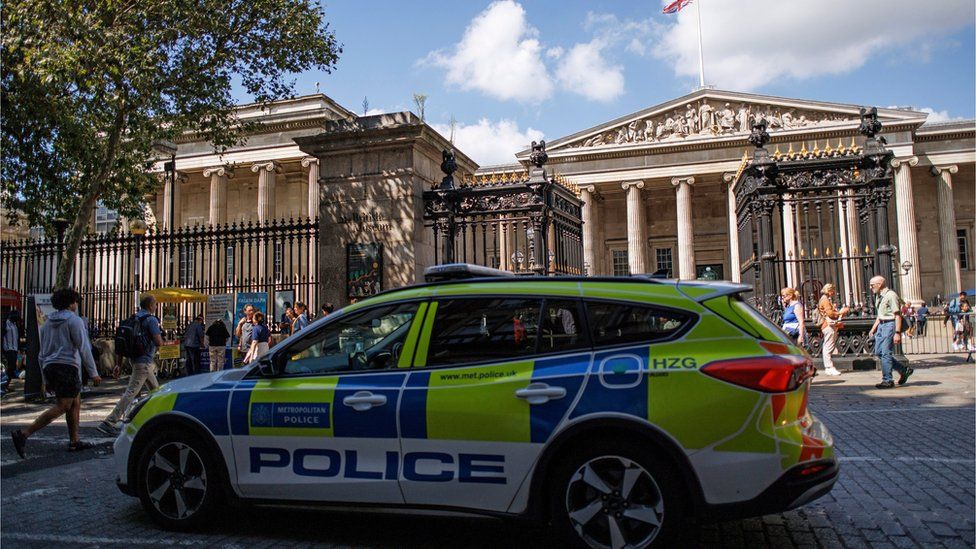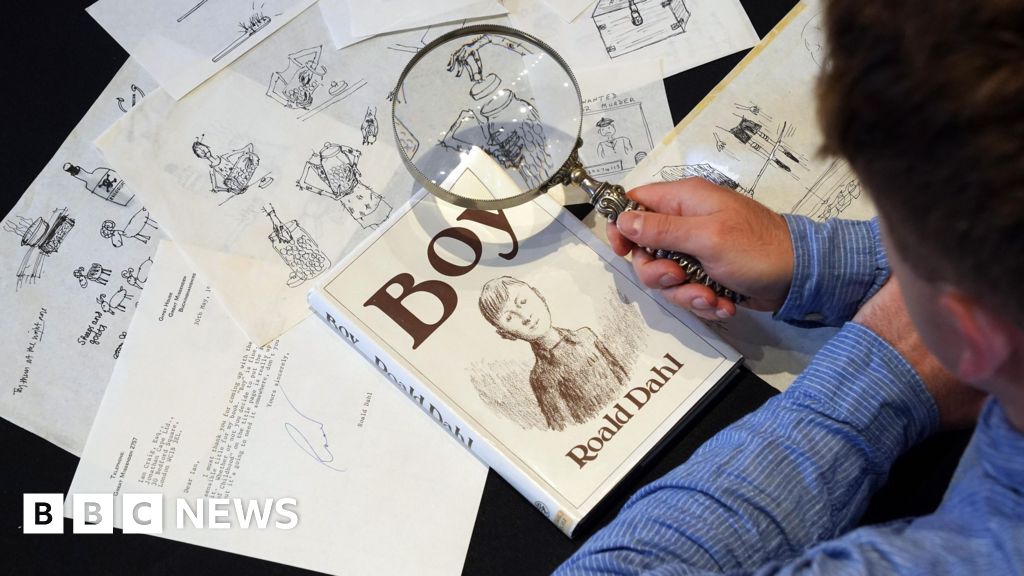ARTICLE AD BOX
 Image source, PA-EFE/REX/Shutterstock
Image source, PA-EFE/REX/Shutterstock
Police outside the British Museum in central London
By Paul Glynn
Entertainment & arts reporter
The British Museum came under pressure this week after it sacked a member of staff over treasures reported "missing, stolen or damaged".
The museum, one of the nation's biggest tourist attractions, is dedicated to human history, art and culture, and is home to millions of valuable objects.
Police are now investigating the theft of items including gold, jewellery and gems of semi-precious stones.
Here's what we know about what has happened so far, as well as a look back at some other big thefts.
What happened?
It is understood the missing items were taken before this year and over a "significant" period of time. Some of them ended up on eBay, being sold for considerably less than their actual estimated value.
None of the treasures, which dated from the 15th Century BC to the 19th Century AD, had recently been on display and had been kept primarily for academic and research purposes, the museum said. The majority of them were kept in a storeroom.
The British Museum's outgoing current director Hartwig Fischer said this week that the museum would "throw our efforts into the recovery of objects".
"This is a highly unusual incident," said Mr Fischer. "I know I speak for all colleagues when I say that we take the safeguarding of all the items in our care extremely seriously.
"We have already tightened our security arrangements and we are working alongside outside experts to complete a definitive account of what is missing, damaged and stolen."
The perpetrator
Legal action is being taken against the staff member who was sacked, added the museum, which has started its own independent review of security.
However, the sacked member of staff has not been identified as the suspected thief.
London's Metropolitan Police is investigating the thefts but no arrests have been made as yet.
BBC News has not been able to independently verify the identity of former employee involved. We have contacted the museum and the police but neither have confirmed their identity, or said exactly why they were sacked, how the items went missing or what they were.
Other thefts at the British Museum
Among the treasures that have previously gone missing from the British Museum are a Cartier ring worth £750,000 and a 12cm marble head.
During the 1970s, the museum said a number of historic coins and medals were stolen.
In 1993, Roman coins and jewellery worth £250,000 were taken after thieves broke in via the roof.
In 2002, the museum reviewed security after a 2,500-year-old Greek statue, believed to be worth around £25,000 was stolen by a member of the public.
Image source, Getty Images
Image caption,The British Museum welcomes millions of visitors each year from all around the world
The marble head was taken from the Greek Archaic Gallery which had been open to the public without a permanent guard on duty.
In 2004, it was reported that 15 "historically important" Chinese artefacts - including jewels, ornate hairpins and fingernail guards - had been taken by a member of the public.
In 2017, it was revealed that an expensive Cartier diamond had actually been missing since 2011.
High-profile museum thefts elsewhere include:
- The robbery of the Mona Lisa from the Louvre in 1911 by handyman Vincenzo Peruggia
- The theft of The Scream, stolen from the Munch Museum in 2004 but recovered two years later
- The Isabella Stewart Gardner Museum in Boston had 13 works, worth a combined $500m (£392m), stolen in 1990. The case remains unsolved
- A slick thief known as "Spider-Man" stole five masterpieces from a Paris museum in 2010
- Impressionist masterpieces were taken from a Paris museum as the public looked on in 1985
- The same year, amateurs took 124 beloved artefacts from a Mexican archaeological museum
- The Nazi looting of Europe during World War II, and Russian looting of Ukraine during the 2022 invasion
Contested artefacts
The British Museum has been under increasing pressure itself in recent years to return items in its collection to their countries of origin.
The demands by Greece for the return of the Parthenon Sculptures, often still known as the Elgin Marbles, are the most high profile example in this contested debate.
They were removed by the diplomat and soldier Lord Elgin in the 19th Century and later bought by the British government and placed in the British Museum.
In March, the Vatican returned three fragments of Athens' Parthenon temple it had kept for centuries.
Image source, Jeff Overs/BBC
Image caption,Parthenon Sculptures, which are originally from the temple of Athena in Greece, were brought to Britain by Lord Elgin
Restitution issues more commonly apply to countries which experienced colonial conflict.
Ethiopia wants the British Museum to return ceremonial crosses, weapons, jewellery, sacred altar tablets and other items taken from Maqdala in the north of the country during British military action in 1868.
The Nigerian government has also formally asked the museum to return 900 Benin Bronzes.
And ruler of Ghana's Asante people has pressed the museum to return gold items in its collection.
Elsewhere in May, Greece said it had recovered hundreds of looted artefacts, including a 2nd Century bronze statue of Alexander the Great.
The British Museum was established by an Act of Parliament in 1753 and is currently governed by the British Museum Act 1963.
Its principal regulator is the Department for Digital, Culture, Media & Sport (DCMS), which also sponsors it. A non-departmental public body, the museum operates at arm's length from government, but is accountable to parliament.

 1 year ago
44
1 year ago
44








 English (US) ·
English (US) ·